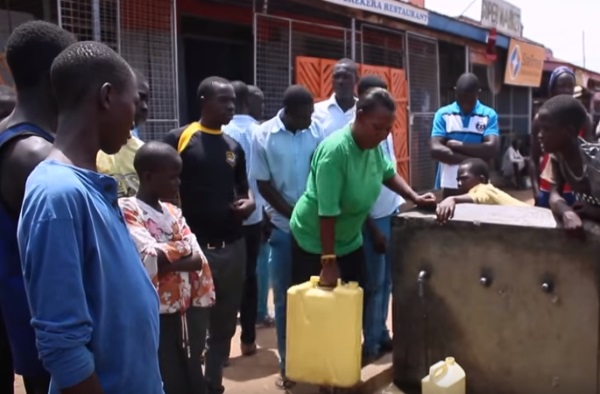The Ministry of Water and Environment through the Water and Sanitation Facility East helped to improve livelihoods in Eastern Uganda through the provision of clean water and sanitation facilities. The Water and Sanitation Facility East is a funding mechanism to the provision of water and sanitation to small towns in Eastern and North-Eastern Uganda. It covered 39 districts including Amuria, Kotido, Kabong, Abim, Moroto, Soroti, Kumi, Bukwo, Kapchorwa, Sironko, Bududa, Namutumba, Kaliro, Kamuli, Buyende, Serere, Napak, Ngora, and Kween. Indeed a good number of residents could attest to better livelihoods with the provision of clean water after just two years.
This woman, a resident of Namutumba town said they previously walked long distances in search of water but this was now history. “We used to suffer carrying heavy containers from the water source but thankfully we don’t have to do that anymore.” “The 683, we have 462 active connections. So when you subtract from the 683, the balance is the number of the inactive customers.” Said, Tonny Byentaka – Operations Manager, Namutumba Water Supply.
There was so much demand of water that National Water and Sewerage Corporation planned to expand its facilities to match the demand. “We are planning to get four boreholes, one is Butende-Kisozi, Musota.... Then two, we intend to upgrade the abstraction from Nakalemba dam from the current 15mm3 per hour to approximately 30mm3 next financial year.” Said, Stephen Walakira – Kamuli Area Manager, Namutumba Water Supply.
The Kamuli town water supply was mainly pumped from the Nakalemba dam near the town. But the major challenge for water providers in areas like Namutumba was operation costs especially in fuel to run the water pump and raw storage capacity. “We have realized that it is expensive to run the system because at the end of the month you realize that you have spent most of the money on buying fuel for the generator as well as servicing it.” Said, Alex Wagubi – Plumber, Namutumba Water Supply. “If they can provide us with an additional water source because the current sources in comparison to the demand we have is not enough most especially during dry seasons.”

